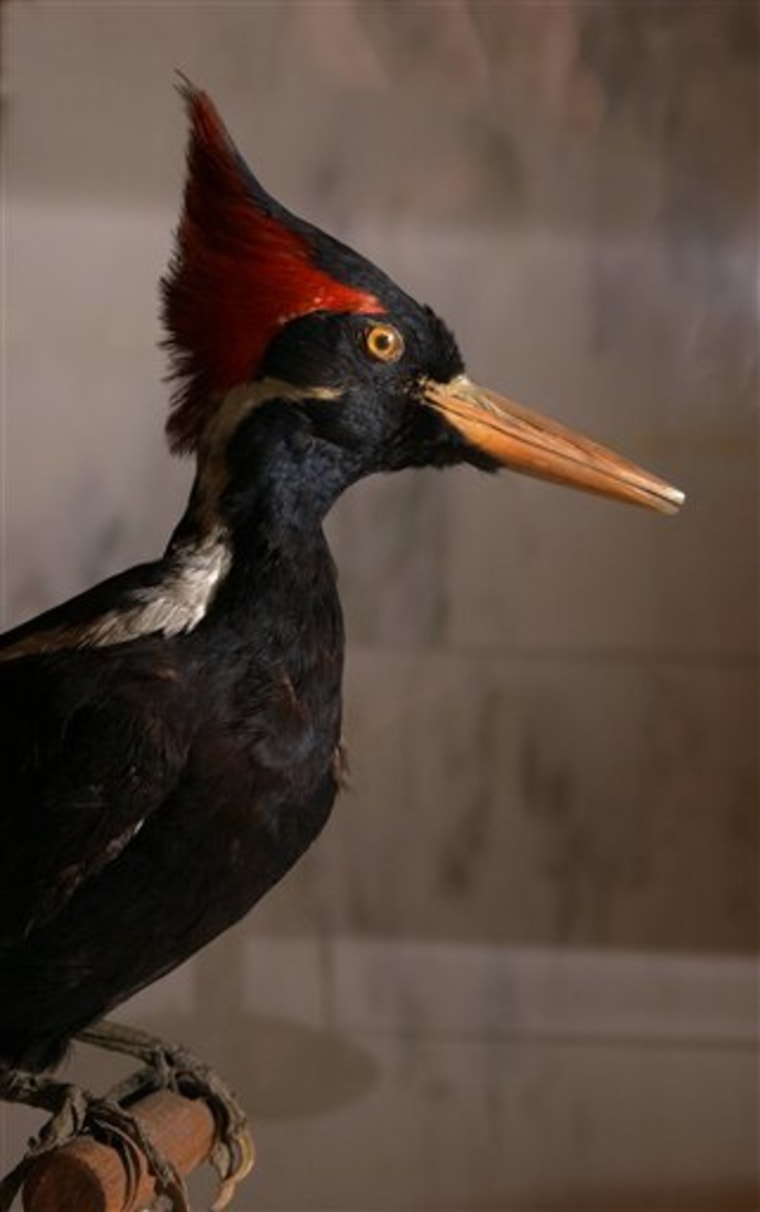Much like the bird that drew attention to it, Bayou de View — where birders reported seeing an ivory-billed woodpecker — is critically endangered, researchers said Thursday.
University of Arkansas at Fayetteville graduate students spent last fall slogging through hip-deep mud to study the cypresses and other trees in the eastern Arkansas bayous. They found a forest of bald cypress and tupelo, an ecosystem that has all but disappeared from the landscape.
Researchers estimate that less than 12,500 acres (5,000 hectares) of such a forest remain in the south, a fraction of the original 42 million acres (17 million hectares).
"We're talking about an extremely endangered forest habitat," said graduate student Mark Spond.
The students measured tree rings on several of the trees and found a handful that were more than 1,000 years old. They used the tree rings to map historic precipitation patterns in the forest.
The research reconstructs the weather in the forest for the past 850 years. Students found evidence of severe droughts in the 14th, 15th and 16th centuries in the trees.
Although bald cypress trees thrive in dry conditions, the researchers speculate that the droughts may have killed off other trees — and may have caused an increase in the number of ivory-billed woodpeckers.
The woodpeckers feed on wood-boring larvae that live in dying and recently dead trees.
The students, along with professor David Stahle, reported their findings in Eos, the newspaper of the American Geophysical Union.
